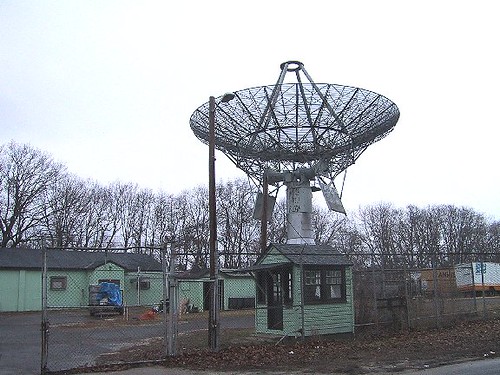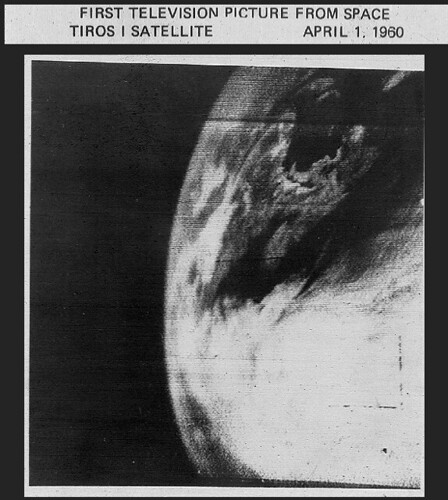Gilat is engaged to deliver its SkyEdge II-based satelli8te network technology to support a border security program of an undisclosed Latin American country.
[UPI – 04/02/2010]
European Space Policy Institute to release fourth volume in series of publications evaluating how to achieve sustainable use of space by means of respecting fairness and responsibility.
[SatNews – 04/02/2010]
Fourth annual Military Satellites Summit April 27 – 28 in Tysons Corner, VA, is announced by the Institute for Defense and Government Advancement.
[dBusinessNews – 04/02/2010]
Ocean Systems Engineering will provide a wide variety of services and support relating to satellite communications to the Marine Corps under $13.1 million order.
[Washington Technology – 04/02/2010]
ARINC becomes Distribution Partner for SwiftBroadband service from Inmarsat.
[SatNews – 04/01/2010].
Gantry for Russian Soyuz rocket at Arianespace facility in French Guiana takes shape.
[SatNews – 04/01/2010]
Bolivia signs contract with China for a $300 million communications satellite.
[Reuters – 04/01/2010]
Integral Systems gets support services contract in Asia for $3+ million.
[SatNews – 04/01/2010]
DirecTV to have four 3D channels beginning in June – ESPN, N3D, a 3D pay-per-view channel, and one on-demand 3D channel.
[SatNews – 04/01/2010]
China Satellite Communications profit jumps 26.9% in 2009.
[TMCnet – 04/01/2010]
Harris comes to 2010 NAB as market leader in Mobile TV, with more than 40 sales of ATSC Mobile DTV systems confirmed to date.
[SatNews – 04/01/2010]
Sencore to introduce its first DVB-S2 modulator.
[SatNews – 04/01/2010]
Scientists funded by Astrium unveil 30 Kg nanosatellite engineered to clear more than 5,000 tons of debris in low-Earth orbit.
[Satellite Today – 04/01/2010]
Frost & Sullivan report finds inadequate satellite bandwidth impacts world VSAT market by increasing service revenues, while causing a dip in sales of equipment or hardware.
[PR Newswire – 04/01/2010]
SpaceX activates International Space Station (ISS) communications system for the Dragon spacecraft, which is to begin ISS resupply missions starting in 2011.
[Space Travel – 03/31/2010]
Shaw Direct contracts with Telesat to acquire capacity on a new satellite to be available in late 2012.
[CNN Money – 03/31/2010]
Comtech Systems gets $34.5 million contract for telecommunications transmission equipment from a North African government.
[CNN Money – 03/31/2010]
Boeing explores collaboration with Indian Space Research Organization in area of communications satellites.
[Space Daily – 03/31/2010]
Astrium is commissioned by European Space Agency to build Sentinel-2B optical satellite.
[SatNews – 03/31/2010]
DigitalGlobe announces its content library contains more than one billion square kilometers of earth imagery, 33% of which is less than one year old.
[SatNews – 03/31/2010]
India’s GSLV rocket, powered by home-made cryogenic engine for the first time, is slated to launch the GSAT-4 experimental satellite April 15th.
[Space Travel – 03/31/2010]
Russia increases security for train rollout of Soyuz rocket for launch to the International Space Station, in aftermath of suicide bomb attacks.
[Space Daily – 03/31/2010]
Documents filed by FCC indicate that Harbinger Capital Partners intends to use its recent acquisition of satellite communications company Skyterra to build out a 4G network, competing withy cellular carriers.
[Business Week – 03/30/2010]
India is developing winged reusable rocket for launching objects into space.
[Space Travel – 03/30/2010]
Singapore to have first locally-built satellite in space by middle of this year – a 120 kg micro-satellite called the X-Sat
[Space Daily – 03/30/2010]
Avanti wins government contract extension in Northern Ireland.
[Satellite Today – 03/30/2010]
CryoSat-2 satellite to be launched April 8 in program led by UK to monitor changes in ice cover at the poles.
[Phys-Org – 03/30/2010]
NASA awards contracts to eight aerospace firms for Rapid Spacecraft Acquisition III spacecraft and related services.
[SatNews – 03/30/2010]
Norsat wins network service contract worth $1.7 million from military group based in Europe.
[SatNews – 03/30/2010]
Teal Group Corp. revises upward its Worldwide Mission Model of future space payloads, indicating there are 2,229 space payloads proposed for launch to Earth or Lunar orbits, or deep space trajectories, from 2010 – 2029.
SatNews – 03/30/2010]
SES WORLD SKIES hosts Defense Information Systems Network connection point at Manassas VA media port, enhancing U.S. government access to WORLD SKIES bandwidth and global connectivity.
[SatNews – 03/30/2010]
SatMAX, a leading provider of non-line of sight satellite communications equipment signs letter of intent to grant exclusive domestic marketing rights to AvStar Aviation Group.
[CNN Money – 03/29/2010]
U.S. Air Force could transfer some Atlas and Delta rocket missions from Florida to California and assign U.S. military payloads to specific boosters closer to launch in effort in improve efficiencies in launch manifests.
[Space Flight Now – 03/29/2010]
Northrup Grumman stops some work on next generation of U.S. weather satellites as officials decide how to proceed under Obama administration’s decision to terminate and divide program among three government agencies.
[Spaceflight Now – 03/29/2010]
Russia Eyes bigger slice of international space market, planning to build a new space center.
[Space Daily – 03/29/2010]
AT&T and Verizon Wireless criticize FCC decision to require SkyTerra to seek FCC approval before leasing capacity to the two largest wireless providers.
[Business Week – 03/29/2010]
Globe Wireless enters agreement to supply and install two FleetBroadband satellite terminals per ship aboard approximately 350 Anlo Eastern Ship Management vessels.
[SatNews – 03/29/2010]
KVH Industries TracPhone and miniVSAT broadband systems to be installed on vessels of DSD Shipping of Norway.
[SatNews – 03/29/2010]
Arianespace Ariane 5 launch postponed several days to allow replacement of part in a launcher subsystem that caused an anomaly.
[SatNews – 03/28/2010]
Cape Canaveral new $500 million rocket launch tower unused, with Ares 1 rocket and entire Constellation program cancelled by the Obama administration.
[Space Travel – 03/28/2010]
Space shuttle Discovery to launch April 5 for 13 day mission in fourth-to-last shuttle launch.
[Discover Magazine – 03/28/2010]
U.S., Air Force responds to Iridium’s call to put hosted payloads, experiments, and sensors on the company’s next-generation satellites.
[Space Flight Now – 03/27/2010]
Air Force flight tests validate two-and-a-half year effort , successfully accessing the high-capacity Ka-band portion of the new WGS satellites from airborne 707 test bed.
[U.S. Air Force web site – 03/26/2010]
WBMSAT PS – Satellite Communications Consulting Services









